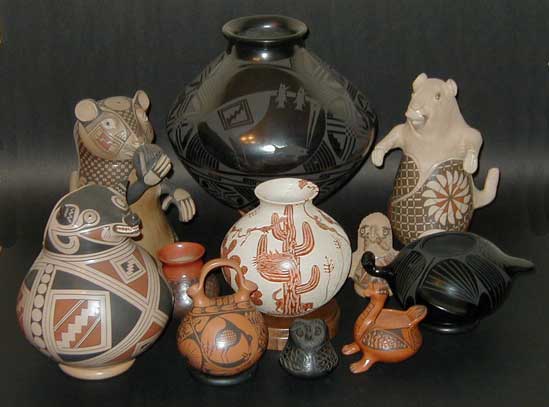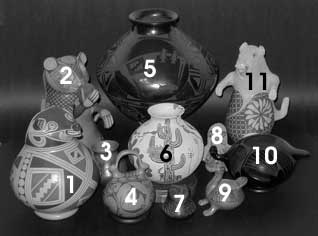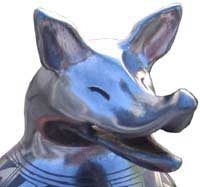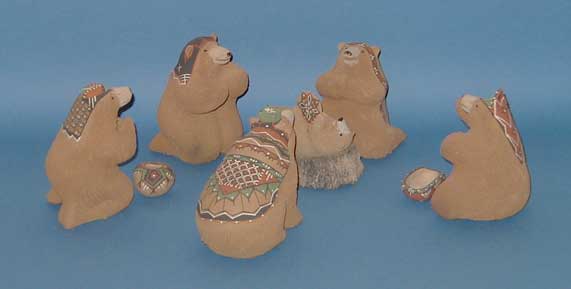 ClayHound Web
- Mata Ortiz
Pottery
ClayHound Web
- Mata Ortiz
PotteryReturn to:
|
Mata Ortiz is located in Mexico, south of El Paso. |
|
|
|
|
|
|
|
|
12
|
13
|
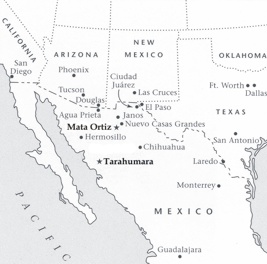 |
The potters of the village of Mata Ortiz in the Casas Grandes area of Mexico, about 100 miles south of the border with New Mexico, have established a potting community that is very creative. Potters seem to vie with each other for the next innovation or the next level of excellence in quality. The original Casas Grandes people had a tradition of pottery making beginning about 1060 A.D. The art was lost after 1340 A.D. until a Mata Ortiz resident, Juan Quezada, figured out the old way of making pottery from pot fragments he found and taught the people of his village. He has spent his life training the young people there how to mix the clay, shape the bowls and jars, decorate them, and fire them outside in homemade kilns using wood and cow dung. Clay is brought down from the mountains in the area. The various colors are red, gray, orange, and pure white. The clay is |
|
dried, ground by hand on a stone metate, and mixed with grit. Then it is sifted and ground to a fine powder. After the powder is mixed with water, it is spread out on a gypsum slab to cure for two to three weeks. More water is added, and the clay is kneaded to a proper consistency for pottery making. To form the pot, a clay "tortilla" is patted out and then pressed into a shallow bowl mold. This gives many of the pots their characteristic, rounded bottoms, and traditionally, would make the pot a good shape doe evenly heating foods over a fire. A thick "donut" of clay is placed on top of this base. The pot is shaped up into a very thin wall, usually by pinching, sometimes by coiling and smoothing the clay. Finally, a small "donut" of clay is added at the top so that the rim can be shaped. After being smoothed with a piece of hacksaw blade, the pot is dried, finished with sandpaper, and polished with a stone to a high shine. The matte design is added by making a "slip" or paint of water and clay. Often using only a single hair from the head of the potter, the fine lines and incredible designs are painted on using hand-eye coordination and the artist's artistic imagination. The pot is fired to harden the clay. First the pot is warmed in the sun. Outside, the pot is heated in an efficient, hot fire which can reach a temperature of about 1220 degrees Fahrenheit. The fuel is cattle dung and cottonwood. Manure from range-fed cattle is preferred to that from grain-fed cattle because it burns more cleanly. If a black pot is desired, then the firing conditions are altered. Pulverized dung is placed beneath the pot after which the pot is covered with a metal box. A clean, hot fire burns on the outside of the metal box, and the pulverized dung burns as an oxygen-poor, smoky fire inside the metal box. This process both hardens and blackens the pot. |
|
